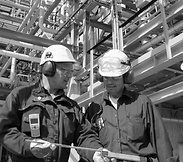Engineering and Technology Quarterly Reviews
ISSN 2622-9374




Published: 28 March 2022
Design of Land Selection Model for Sustainable Rice Field Direction Using SIG Technology in Kurik District of Merauke of Papua
Susanto, Irene Ike Praptiwi
UNMUS Merauke, Indonesia

Download Full-Text Pdf
10.5281/zenodo.6386333
Pages: 1-8
Keywords: Sustainable Rice Fields, Rice Productivity, SIG, Kurik District
Abstract
Kurik District is a rice production center in Merauke Regency. The use of rice field agricultural land in Kurik District needs to be optimized for improving community welfare and the road to national food sovereignty. Until now Kurik District has not established the existence of sustainable rice fields in order to maintain food security. Determination of sustainable rice fields must be adjusted to the actual conditions of rice fields, such as water availability conditions, land intensity and rice productivity. In determining sustainable rice fields can be identified using the help of remote sensing imagery. This study aims to 1) review the ability of Landsat 8 image for interpretation of rice farming intensity based on the planting calendar 2) to find out the distribution of sustainable rice fields based on actual land criteria. Sustainable rice fields are determined by using matching methods against established criteria. The criteria that have been set consist of interrelated parameters, such as water availability, field intensity, and rice productivity. In determining the direction of sustainable rice fields first, a visual interpretation of the image of the sharpening image fussion to find out the condition of water availability, the intensity of the land with multitemporal imagery based on the planting calendar, and landform units. The results of this study have been made a model of sustainable rice field selection in Kurik District of Merauke Regency Papua.
References
Asma Th. Ibraheem (2012). Development of Large-Scale Information System (LIS) by sing GIS and Field Surveying. Department Of Civil Engineering Nahrain University, Baghdad, Iraq
Badan Pusat Statistik (2018). Merauke In Numbers. PEMDA Kabupaten Merauke.
Barus B, Panuju, Iman, Triasongko, Gandasasmita, dan Kusumo (2011). Mapping the Potential for Rice Field Conversion in Relation to Sustainable Agricultural Land with Spatial Analysis. [Paper Presentation] In Seminar dan Kongres HITI X
Claudia Pahl-Wostl (2019). Governance of The Water-Energy-Food Security Nexus: A Multi-level Coordination Challenge. Environmental Science & Policy, Vol 92 p 356-367
Javier Giovanny AH, Lida Paola PG, Javier EV (2017). Growth and Productionof Rice (Oryza Sativa L.) Under Different Fertilization Plans With Silicon. Journal Ingenieria Investigation, Vol 7 No 1 p 7-15
Kementrian Pertanian-Skretariat Jendral (2013). The Statistis Of Rice Field Raw Area and Rice Harvest Area. http://eksim.pertanian.go.id/publikasi302-statistik-luas-baku-lahan-sawah-dan-luas-panen-padi.html
Nurliani, Ida Rosada (2016). Rice-field Conversion and It’s Impact On Food Availability. Journal Agriculture And Agricultural Science Procedia, Vol 19, Pages 40-46.
Permentan No: 07/Permentan/Ot.140/2/2012 (2012). Sustainable Food Agricultural Land Specifications. Menteri Pertanian Republik Indonesia. Jakarta
Prahasta, Eddy (2002). Geographics Information System Conceps. Informatika, Bandung.
Sartohadi, J dan Putri, R.F. 2008. Evaluation of Land Degradation Potential Using Analysis of Land Capability and Population Pressure on Agricultural Land in Kokap District of Kulon Progo Regency. Journal Of Forum Geografi, Vol. 22, No. 1. Fakultas Geografi Universitas Gadjah Mada. Yogyakarta
Sumarno (2006). Sustainable Rice Production System with the Implementation of the Sustainable Green Revolution. Iptek Tanaman Pangan (1)
Sutanto (2013). The Method Of Remote Sensing Research. OMBAK, Yogyakarta
T. Subramani, G. Raghu Prakash (2016). Rice Base Irrigated Agriculture Using GIS. IJETTCS, Vol 5 issue 3
UU Republik Indonesia Nomor 41 (2009). Protection of Sustainable Food Agricultural Land. Pasal 9 Ayat 5.
